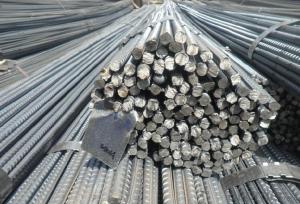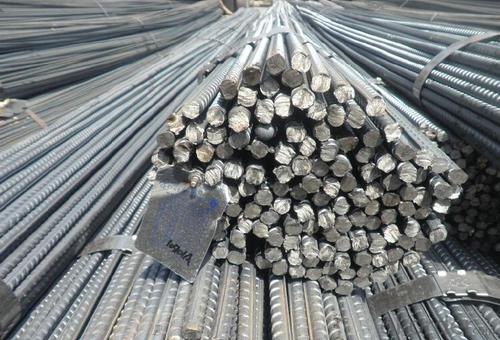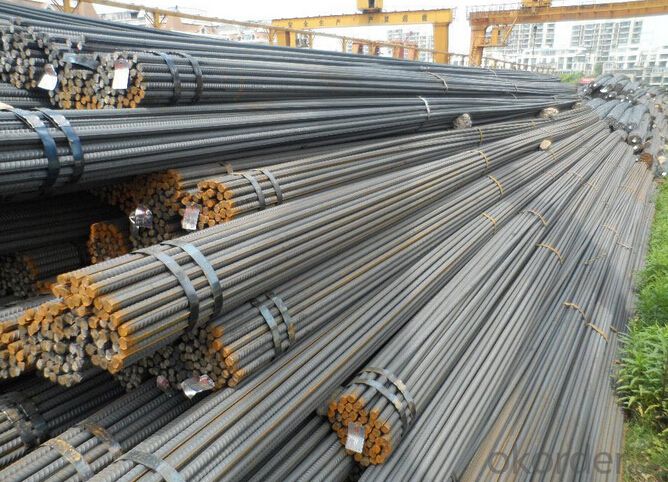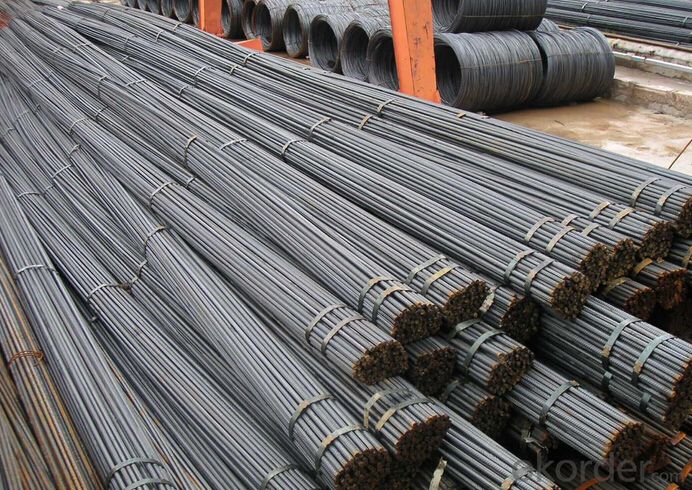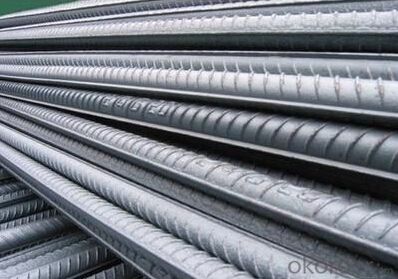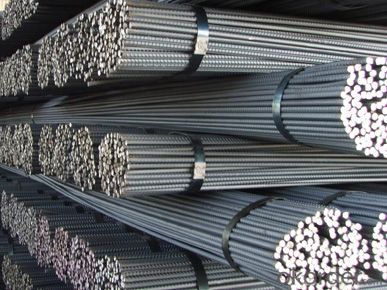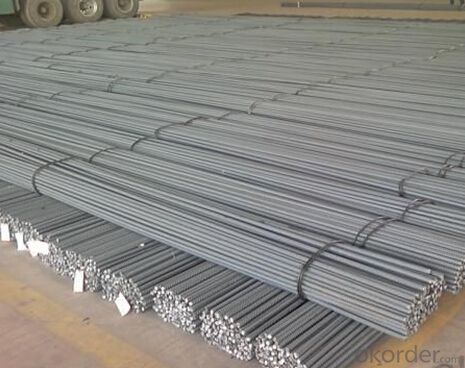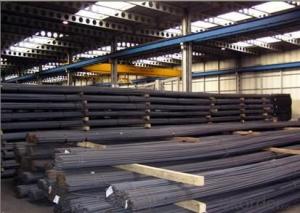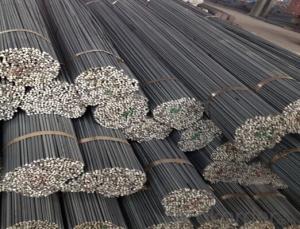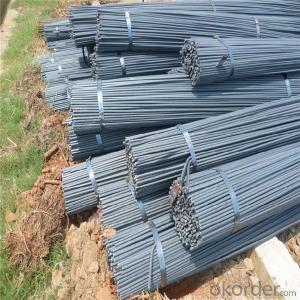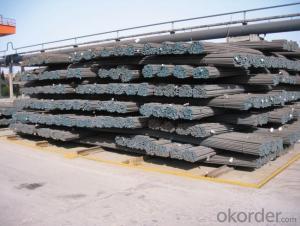ASTM A615/BS4449 Standard Deformed Steel Rebars
- Loading Port:
- Tianjin
- Payment Terms:
- TT OR LC
- Min Order Qty:
- 100 m.t.
- Supply Capability:
- 10000 m.t./month
OKorder Service Pledge
Quality Product, Order Online Tracking, Timely Delivery
OKorder Financial Service
Credit Rating, Credit Services, Credit Purchasing
You Might Also Like
Specification
Standard:
AISI,ASTM,JIS,GB,BS,DIN,API,EN
Technique:
Hot Rolled,Cold Rolled,Cold Drawn,ERW,Forged,Saw,Extruded,EFW,Spring
Shape:
U Channel,Square,C Channel,Hexagonal,Round,Rectangular,Oval,LTZ
Surface Treatment:
Galvanized,Coated,Copper Coated,Color Coated,Oiled,Dry,Chromed Passivation,Polished,Bright,Black,PVDF Coated
Steel Grade:
Q195,Q215,Q235,Q215B,Q235B,RHB335,HRB400,200 Series,300 Series,400 Series,600 Series,SS400-SS490,10#,20#,A53(A,B)
Certification:
UL,BSI,ISO,SGS,BV,IBR,RoHS,CE,API
Thickness:
8-40
Length:
12
Net Weight:
10
ASTM A615/BS4449 Standard Deformed Steel Rebars
Details of ASTM A615/BS4449 Standard Deformed Steel Rebars
| Standard & Grade: | GB1499-98 : HRB335,HRB400,HRB500 |
| BS4449-1997 : GR460,GR500 | |
| CAN/CSA-G30.18-M92 : 400W | |
| ASTM A615 : Gr.40, Gr.60 | |
| Diameter: | 6mm;8mm;10mm;12mm;14mm;16mm;18mm;20mm;22mm;25mm;28mm;30mm;32mm;35mm;40mm |
| Length: | 6m,9m,12m |
| Packing: | Bundle packing |
| Origin: | China |
| Application: | Construction,Road,Machinery processing,Welding fields. |
| Delivery time: | 10-25 days |
| Shipment: | By bulk vessel or Container |
| Documents: | Mill Test Certificate,Commercial Invoice,Packing List,Certificate of Origin |
Company Introduction of the ASTM A615/BS4449 Standard Deformed Steel Rebars
CNBM International Corporation is the most import and export platform of CNBM group(China National Building Material Group Corporation) ,which is a state-owned enterprise, ranked in 270th of Fortune Global 500 in 2015.
With its advantages, CNBM International are mainly concentrate on Cement, Glass, Iron and Steel, Ceramics industries and devotes herself for supplying high quality series of refractories as well as technical consultancies and logistics solution.
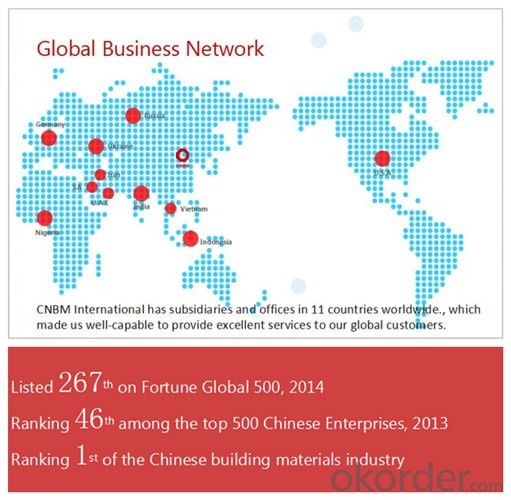
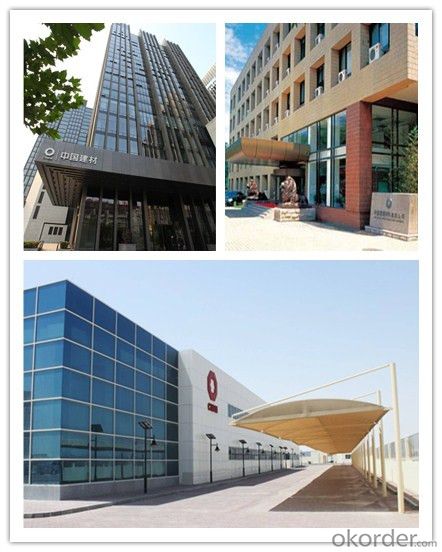
Packaging & Delivery of the ASTM A615/BS4449 Standard Deformed Steel Rebars
| Packaging Detail | Sea worthy packing /as per customer's packing instruction |
| Delivery Detail | 15 ~ 40 days after receiving the deposit |
FAQ
| Are you a trading company or manufacturer? | Manufacturer |
| What’s the MOQ? | 1000m2 |
| What’s your delivery time? | 15-20 days after downpayment received |
| Do you Accept OEM service? | Yes |
| what’s your delivery terms? | FOB/CFR/CIF |
| What's the Payment Terms? | 30% as deposit,70% before shipment by T/T |
| Western Union acceptable for small amount. | |
| L/C acceptable for large amount. | |
| Scrow ,Paybal,Alipay are also ok | |
| Why choose us? | Chose happens because of quality, then price, We can give you both. Additionally, we can also offer professional products inquiry, products knowledge train (for agents), smooth goods delivery, excellent customer solution proposals. |
| What's your available port of Shipment? | Main Port, China |
| What’s your featured services? | Our service formula: good quality+ good price+ good service=customer's trust |
| Where are your Market? | Covering more than 160 countries in the world |
- Q: Are steel rebars suitable for use in earthquake-prone regions?
- Steel rebars are a suitable option for use in regions prone to earthquakes. They are commonly utilized in the construction industry to strengthen concrete structures, providing increased resistance against the powerful forces unleashed by earthquakes. The flexibility of steel allows it to effectively absorb and distribute energy during seismic events, thereby minimizing potential damage. In addition, the presence of steel rebars significantly improves the overall structural integrity of buildings, enabling them to withstand seismic activities more effectively. Moreover, steel rebars can be specifically designed and installed to adhere to seismic design codes and standards applicable to earthquake-prone areas, ensuring the safety of the structures. In summary, steel rebars are a dependable and efficient choice for reinforcing buildings in regions susceptible to earthquakes.
- Q: What is the corrosion resistance of steel rebars?
- The surface of steel rebars forms a protective layer, known as a passive film, which provides excellent corrosion resistance. This film is created when the steel interacts with the surrounding environment. By acting as a barrier, the passive film prevents oxygen and moisture from reaching the steel, thus inhibiting corrosion. There are various factors that contribute to the corrosion resistance of steel rebars. For example, the presence of alloying elements like chromium, nickel, and molybdenum improves the formation and stability of the passive film, making the rebars more resistant to corrosion. Additionally, the composition and microstructure of the steel rebars play a crucial role in determining their resistance to corrosion. However, it is important to note that the corrosion resistance of steel rebars can be compromised under certain conditions. High levels of chlorides, such as those in marine environments or de-icing salts, can accelerate corrosion and reduce the effectiveness of the passive film. Similarly, exposure to acidic or alkaline environments can also negatively affect the corrosion resistance of steel rebars. To minimize the risk of corrosion, various protective measures can be taken. These include applying coatings or paints to the rebars, using corrosion inhibitors, or implementing cathodic protection systems. Regular inspection, maintenance, and proper design and construction practices are also essential to ensure the long-term corrosion resistance of steel rebars in different applications. In conclusion, the excellent corrosion resistance of steel rebars is due to the formation of a protective passive film. However, this resistance can be influenced by factors such as the environment, alloying elements, and microstructure. By implementing appropriate protective measures and maintenance practices, the corrosion resistance of steel rebars can be effectively maintained, ensuring their durability and structural integrity.
- Q: Can steel rebars be used in residential construction?
- Yes, steel rebars can be used in residential construction. They are commonly used to reinforce concrete foundations, walls, slabs, and other structural elements in residential buildings to enhance their strength and durability.
- Q: How long do steel rebars typically last in a building?
- Steel rebars typically last for the entire lifespan of a building, which can range from 50 to 100 years or even longer with proper maintenance and protection against corrosion.
- Q: How do steel rebars contribute to the energy efficiency of a building?
- Steel rebars contribute to the energy efficiency of a building in several ways. Firstly, steel rebars are used to reinforce concrete structures, such as beams, columns, and walls. This reinforcement helps to increase the structural integrity of the building, allowing it to withstand various loads and forces. This, in turn, reduces the need for excessive materials in the construction process, leading to a more energy-efficient building. Additionally, steel rebars have excellent thermal conductivity properties. This means that they can efficiently transfer and distribute heat throughout the building, helping to regulate the internal temperature. By evenly distributing heat, steel rebars help to minimize temperature fluctuations, reducing the need for excessive heating or cooling systems, thus saving energy. Moreover, steel rebars have a long lifespan and require minimal maintenance. This durability ensures that the building remains structurally sound over time, reducing the need for frequent repairs or replacements. As a result, the energy consumed in maintenance and renovation activities is significantly reduced. Furthermore, the use of steel rebars allows for the construction of larger, open spaces with fewer supporting columns. This design flexibility facilitates the integration of natural light and ventilation, reducing the reliance on artificial lighting and air conditioning systems. By maximizing natural resources, steel rebars contribute to the energy efficiency of the building. In conclusion, steel rebars play a vital role in enhancing the energy efficiency of a building. Their ability to reinforce structures, efficient thermal conductivity, durability, and design flexibility all contribute to reducing the energy consumption associated with construction, maintenance, and operation of the building.
- Q: What are the common defects found in steel rebars?
- There are several common defects that can be found in steel rebars. One common defect is surface cracks, which can occur during the manufacturing process or due to improper handling and storage. These cracks can compromise the strength and integrity of the rebars and may lead to failure under load. Another common defect is corrosion, which can occur when the rebars are exposed to moisture or chemicals. Corrosion can weaken the rebars and reduce their load-bearing capacity, making them more susceptible to failure. Bending and straightening defects are also frequently observed in steel rebars. Improper bending or straightening can lead to cracks, buckling, or uneven stress distribution, compromising the rebars' performance. Inadequate welding or improper lapping of rebars can result in poor connections and reduced structural integrity. Welding defects such as lack of fusion, incomplete penetration, or excessive porosity can weaken the rebars and increase the risk of failure. Dimensional defects, such as variations in diameter, length, or straightness, can affect the rebars' fit and compatibility with other structural components. If rebars are not properly aligned or do not meet the required dimensions, it can lead to reduced structural strength and compromised performance. Lastly, improper heat treatment during the manufacturing process can result in internal defects such as segregation, inclusions, or improper grain structure. These defects can weaken the rebars and make them more prone to fracture or failure under load. Overall, it is essential to carefully inspect steel rebars for these common defects to ensure the structural integrity and safety of the construction projects they are used in.
- Q: How are steel rebars cut and bent on-site?
- Steel rebars are cut and bent on-site using specialized equipment such as rebar cutters and benders. The rebars are measured, marked, and then cut to the required length using the cutter. After cutting, the rebars are placed into the bender machine where they are bent to the desired shape or angle. This process ensures that the rebars are tailored to fit the specific construction requirements of the project.
- Q: How do steel rebars prevent the concrete from cracking under tension?
- Steel rebars prevent concrete from cracking under tension by providing reinforcement and increasing the structural integrity of the concrete. When concrete is subjected to tensile forces, it tends to crack due to its low tensile strength. However, when steel rebars are embedded within the concrete, they act as a reinforcement by absorbing and distributing the tensile forces. The steel rebars, which are typically made of high-strength steel, have a much higher tensile strength compared to concrete. This means that when the concrete is subjected to tension, the rebars bear most of the load, preventing the concrete from cracking. The rebars act as a framework or skeleton within the concrete, resisting the tensile forces and ensuring the structural stability of the concrete. Moreover, the bond between the steel rebar and the concrete also contributes to preventing cracking under tension. The ribbed or deformed surface of the rebars enhances the bond with the surrounding concrete, creating a strong connection. This bond allows the rebars to transfer the tensile forces to the concrete matrix more effectively, reducing the risk of cracking. By reinforcing the concrete, steel rebars help to distribute the tensile forces more evenly throughout the structure. This prevents localized stress concentrations and minimizes the chances of cracks forming. Additionally, the presence of rebars can also help control crack propagation if cracks do occur, as they act as barriers that restrict the cracks from spreading further. In summary, steel rebars prevent concrete from cracking under tension by providing reinforcement and increasing the overall strength of the concrete structure. They bear the tensile forces, distribute them evenly, and enhance the bond between the rebar and the concrete. This reinforcement ensures the structural integrity of the concrete and helps prevent cracking.
- Q: What is the role of steel rebars in earthquake-resistant structures?
- The role of steel rebars in earthquake-resistant structures is crucial. Steel rebars, or reinforcing bars, are used to reinforce concrete structures and provide additional strength and stability, making them more resistant to the destructive forces of an earthquake. During an earthquake, the ground shakes violently, exerting immense pressure and causing the structure to undergo significant stress. Without proper reinforcement, the concrete alone may not be able to withstand these forces, leading to structural failure and potential collapse. Steel rebars are typically embedded within the concrete, forming a strong bond with it. These rebars act as a skeleton or framework, distributing the load and stress evenly throughout the structure. They enhance the tensile strength of concrete, which is naturally weak in tension but strong in compression. By providing resistance against bending, shearing, and tensile forces, steel rebars help prevent cracks and limit the extent of damage caused by seismic activity. Furthermore, the presence of steel rebars allows for better ductility in the structure. Ductility is the ability of a material to deform without breaking or fracturing. In the event of an earthquake, the steel rebars can stretch and flex, absorbing and dissipating energy, thereby reducing the impact on the concrete and minimizing structural damage. The combination of the rigid concrete and the flexible steel rebars creates a system that can withstand the lateral forces and vibrations produced during an earthquake. In essence, steel rebars play a crucial role in earthquake-resistant structures by reinforcing concrete, improving its tensile strength, enhancing ductility, and providing overall stability. Their inclusion in the design and construction of buildings and infrastructure is essential to ensure the safety and resilience of these structures in seismic zones.
- Q: What is the role of steel rebars in preventing concrete cracking?
- The role of steel rebars in preventing concrete cracking is to provide reinforcement and strength to the concrete structure. By adding steel rebars, which are embedded within the concrete, it helps distribute the tensile forces and resist cracking caused by shrinkage, temperature changes, and external loads. The rebars act as a skeletal framework, enhancing the overall durability, stability, and resistance to cracking of the concrete.
Send your message to us
ASTM A615/BS4449 Standard Deformed Steel Rebars
- Loading Port:
- Tianjin
- Payment Terms:
- TT OR LC
- Min Order Qty:
- 100 m.t.
- Supply Capability:
- 10000 m.t./month
OKorder Service Pledge
Quality Product, Order Online Tracking, Timely Delivery
OKorder Financial Service
Credit Rating, Credit Services, Credit Purchasing
Similar products
Hot products
Hot Searches
Related keywords
